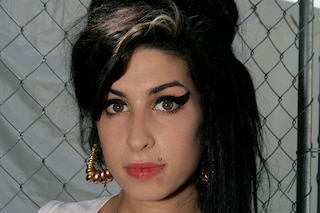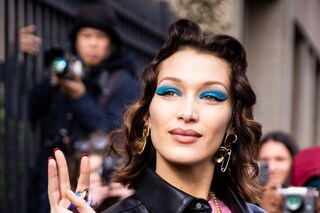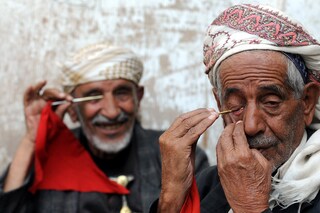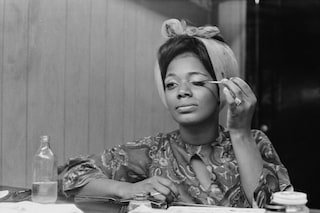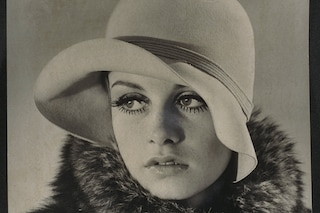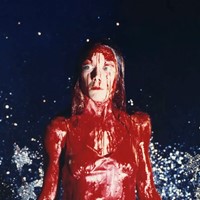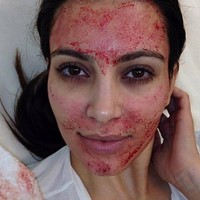In her new book Eyeliner: A Cultural History, Zahra Hankir traces the evolution of eyeliner and the significance it has come to hold around the world
As a child, one of Zahra Hankir’s favourite pastimes was watching her mother apply her eyeliner. “Liquid liner to her lids and kohl along her waterlines,” she recalls. With six children and “the world’s weight on her shoulders” having fled civil war in Lebanon, Hankir reflects that her mother seemed to be “surrounded by constant chaos”. But when she paused to put her eyeliner on, she says that she “often felt that the entire world would come to a standstill. Her hand was steady, the chaos calmed and it was as if she was engaging in a sort of ritual”.
Hankir, now a culture writer and journalist, came to discover that eyeliner was a powerful way of connecting with her Lebanese roots while growing up in the north of England. “It wasn’t until later that I researched and learned that there is so much more to eyeliner than meets the eye,” she explains. “Eyeliner wasn’t only connecting me to my mother and my grandmother but also to an entire lineage of non-Western women. Ultimately, when wearing it, I felt I was relating to my Arabness.”
Through her personal journey with eyeliner as a tool for shaping her sense of self, and her own curiosity for the history of its use across time and cultures, Hankir’s new book Eyeliner: A Cultural History is an anthropological journey that reveals its immense power. In the book, Hankir delves into the political contexts that inform our make-up choices, such as the connections between oppressive regimes, womanhood and morality in the context of the murder of Mahsa Amini. By interviewing people from different global communities in each chapter, Eyeliner is a comprehensive account of how this age-old medium became a means for connection, communication and rebellion.
We spoke to Hankir about feminist resistance, the global history of eyeliner, and how make-up and cultural identity go hand in hand.
You write about how discovering Queen Nefertiti of Egypt led to you learning that make-up and beautification are not simply an accessory but something that carries feminist history. What examples of eyeliner as a tool of resistance most resonated with you?
Zahra Hankir: I was incredibly moved by the Mexican-American Chola community and how they have historically wielded eyeliner to express pride in their identity and heritage. Going a step further, their aesthetic is also political in that it has served as a way for the community to reject the immense pressure to assimilate into American (and specifically, white American) culture.
Mexican Americans have experienced a long history of racism in the US, and over and above their political resistance to that discrimination, they have engaged in what I like to call ‘aesthetic resistance’, with eyeliner being a significant tool in that overall aesthetic. They don’t look at it as make-up, but really as a form of armour, and beyond armour, sometimes as a weapon.
The use of sormeh (naturally produced eyeliner) in Iran is also fascinating. Many women use eyeliner and other items of make-up to express themselves in quite creative ways, given that their bodies are policed (by the so-called morality police), and they don’t have the flexibility and ability to experiment in the same way that women in the west do, for example.
Why did you feel it was essential to fuse historical truths and personal interviews with pop culture representations of eyeliner use?
Zahra Hankir: What makes eyeliner quite fascinating is that it is a visual object that gives so many people from all walks of life an outlet to express their identities simply by way of the thickness of the lines or the angle of the wings.
There is no shortage of historical research to back up that eyeliner is about so much more than beauty. It exists comfortably at the intersection of religion, race, spirituality, power, identity, and heritage. Its roots go back centuries – to ancient Egypt – and despite the product having traversed continents and communities, it is still used today in ways similar to the past: for spiritual, medicinal, and aesthetic purposes.
Eyeliner is an object that sets people apart because of how different people use it so distinctly, but it also is very much an object that unites us. Such is its power.

Amy Winehouse was someone known for her bold winged eyeliner. Why did you decide to dedicate a chapter to her in this book, and what did you discover?
Zahra Hankir: Amy Winehouse’s eyeliner aesthetic is so unique, I consider it unmatched. No celebrity has been able to replicate it. The singer was influenced by so many different genres, eras, girl groups, and even a drag queen at one point, but she somehow managed to make her eyeliner style her own. Her wings extended so dramatically, and often I felt that these lines weren’t just a way for her to express her confidence (or her struggles with confidence), but to show the world that she was coming into her own as an artist, and also as an individual.
Winehouse was overly scrutinised for her aesthetic and how she presented herself to the world. Her eyeliner was often described as smeared or smudged, for example, in news stories about her ‘unravelling’. In that sense, her pigment takes on even greater meaning. In some ways, she made more of a statement when she didn’t wear eyeliner than when she did. For example, she was barefaced at her final public performance in Belgrade, Serbia, an inkling perhaps that something had gone terribly wrong.
I do believe Amy Winehouse is as much an eyeliner icon as Nefertiti is. Without realising it, I even started wearing my wings like Amy Winehouse’s as I worked on this chapter; that’s how much her art and life impacted me as I researched the book.
You travelled across continents to research and write this book. What was a highlight for you?
Zahra Hankir: My trip aimed to observe the Wodaabe (a subset of the Fulani ethnic group) participate in a beauty contest held annually, in which the women – refreshingly! – judge the men. Beauty is a part of the Fulani’s moral code; therefore, it holds quite a profound place in the culture and is not considered even remotely superficial. The Wodaabe’s beauty standards are quite different from Western ones, which I also found fascinating. For example, they believe a large forehead to be quite attractive and value the idea of contrast. In that sense, the darkness of the eye, achieved with the help of kohl against the whiteness of the iris, is considered a desirable attribute (as is whitened teeth and darkened lips).

You write about the role of eyeliner in drag culture – did you see any commonalities between its use in drag spaces and other cultures?
Zahra Hankir: In drag make-up culture, the use of eyeliner is fundamental to the idea of transformation, given that men transform into women on stage and at shows. Therefore, beyond the aesthetic, eyeliner plays a significant role in enabling queens to transition from one gender to another, not just in terms of their looks but also how they feel. As I observed with the queens I interviewed, eyeliner can also play a significant role in helping boost confidence on stage, especially as the looks can be pretty dramatic and flashy.
I definitely found a parallel between the drag queen aesthetic and the aesthetics of other performers globally, including, for example, the geisha of Japan and the Kathakali dancers of India. In all three communities, the eye enhancement is done partly to ensure that the eyes are distinctly seen from afar to help the audience better read facial expressions. In general, the idea of transformation is common for these performers, especially when using heavy eyeliner.
Your book reveals the sheer scope that one item can have in communicating a whole host of messages to broader society about the wearer. What do you feel that eyeliner wearers have n common?
Zahra Hankir: Eyeliner wearers the world over share that we want to convey some sort of a message. When we are lining our eyes with pigment, we are choosing how thick the lines will be, whether or not we want to wear wings, or whether to use black eyeliner, blue eyeliner, or purple eyeliner. The choices are endless.
I found quite a lot of intersectionality among communities in the global south who use eyeliner for purposes that go beyond the aesthetic, and make the substance from natural materials, ranging from stones and nuts to tree sap and plants. Beyond the physical, in this region, some people may be wearing eyeliner to honour the gods; to express their religiosity, especially if they are Muslim; for medicinal purposes to treat the various eye ailments; and to protect the eyes against the evil eye or evil spirits.
Like ink itself, eyeliner can convey a story, depending on how and why you’re wearing it. After people read this book, I hope that they recognise that eyeliner carries the weight of these stories, and that even though it is worn widely in the west, its roots are firmly in the east.
Join Dazed Club and be part of our world! You get exclusive access to events, parties, festivals and our editors, as well as a free subscription to Dazed for a year. Join for £5/month today.


